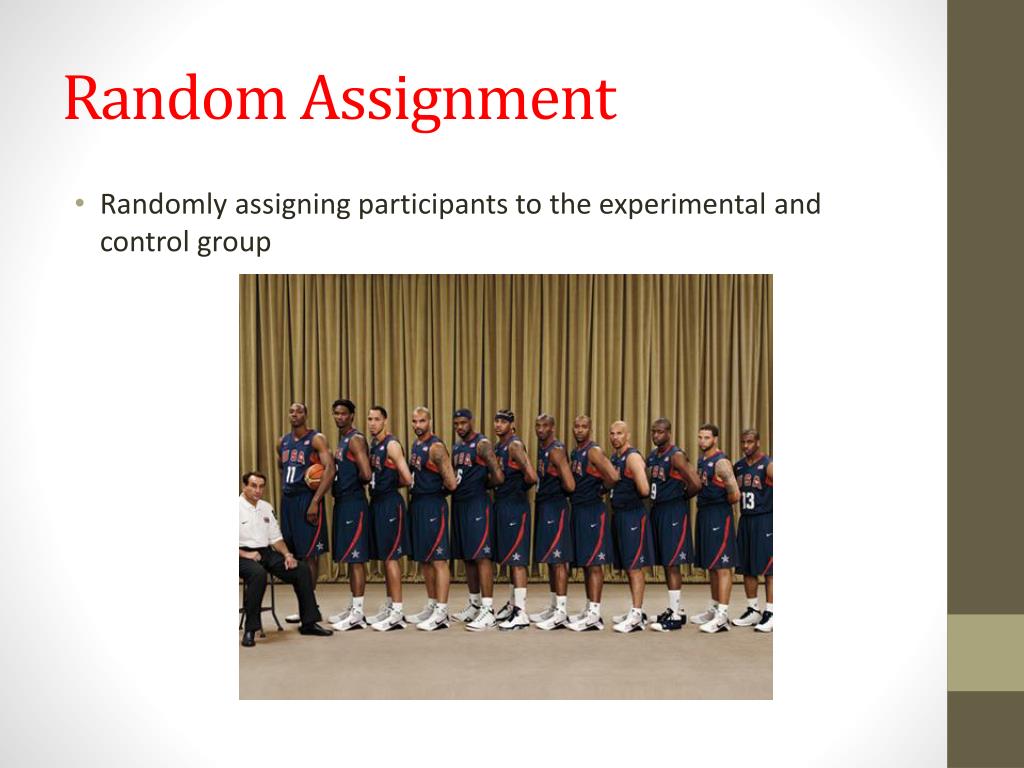
Jerzy Neyman advocated randomization in survey sampling (1934) and in experiments (1923). Peirce's experiment inspired other researchers in psychology and education, which developed a research tradition of randomized experiments in laboratories and specialized textbooks in the eighteen-hundreds. Peirce randomly assigned volunteers to a blinded, repeated-measures design to evaluate their ability to discriminate weights. Peirce applied randomization in the Peirce- Jastrow experiment on weight perception.Ĭharles S. Peirce in " Illustrations of the Logic of Science" (1877–1878) and " A Theory of Probable Inference" (1883). Randomization was emphasized in the theory of statistical inference of Charles S. More advanced statistical modeling can be used to adapt the inference to the sampling method. This is a rare event under random assignment, but it could happen, and when it does it might add some doubt to the causal agent in the experimental hypothesis.īecause most basic statistical tests require the hypothesis of an independent randomly sampled population, random assignment is the desired assignment method because it provides control for all attributes of the members of the samples-in contrast to matching on only one or more variables-and provides the mathematical basis for estimating the likelihood of group equivalence for characteristics one is interested in, both for pretreatment checks on equivalence and the evaluation of post treatment results using inferential statistics. In the example above using random assignment may create an assignment to groups that has 20 blue-eyed people and 5 brown-eyed people in one group. That is, the groups will be sufficiently different on the variable tested to conclude statistically that they did not come from the same population, even though, procedurally, they were assigned from the same total group. To express this same idea statistically - If a test of statistical significance is applied to randomly assigned groups to test the difference between sample means against the null hypothesis that they are equal to the same population mean (i.e., population mean of differences = 0), given the probability distribution, the null hypothesis will sometimes be "rejected," that is, deemed not plausible. If a randomly assigned group is compared to the mean it may be discovered that statistically they differ, even though they were assigned from the same group. With random assignment, one would randomly assign individuals to either treatment or control and therefore have a better chance at detecting if an observed change is due to chance or due to the experimental treatment. When analyzing the results, one might question whether an observed effect was due to the application of the experimental condition or was in fact due to eye color. If the experimenter were to assign all of the blue-eyed people to the treatment group and the brown-eyed people to the control group, the results may be biased. Suppose the experimenter has recruited a population of 50 people for the experiment-25 with blue eyes and 25 with brown eyes. Assign subjects with "Tails" to the other group: Experimental GroupĬonsider an experiment with a treatment group and one control group. Step 3: Assign subjects with "Heads" to one group : Control Group.Step 2: Devise a method to randomize that is purely mechanical ( e.g.

Step 1: Begin with a collection of subjects.Example compares "Apple to Apple" and "Orange to Orange". Random assignment facilitates comparison in experiments by creating similar groups. Random assignment does not guarantee that the groups are "matched" or equivalent, only that any differences are due to chance. In experimental design, random assignment of participants in experiments or treatment and control groups help to ensure that any differences between and within the groups are not systematic at the outset of the experiment. The thinking behind random assignment is that by randomizing treatment assignment, then the group attributes for the different treatments will be roughly equivalent and therefore any effect observed between treatment groups can be linked to the treatment effect and is not a characteristic of the individuals in the group. Random assignment or random placement is an experimental technique for assigning subjects to different treatments (or no treatment).


 0 kommentar(er)
0 kommentar(er)
